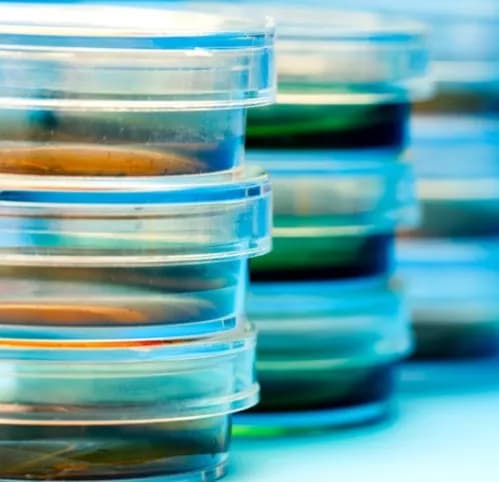What are the other Names for this Test? (Equivalent Terms)
- Aerobic Wound Culture
- Anaerobic Wound Culture
- Bacterial Culture
What is Bacterial Wound Culture Test? (Background Information)
- A Bacterial Wound Culture is a test to detect and identify harmful bacteria that may be growing on the skin or in a wound. The type(s) of bacteria identified, is then subjected to susceptibility/sensitivity testing
- The results of a wound culture and susceptibility testing is used by a healthcare provider to make appropriate decision about the type of antibiotic therapy to be used in an individual, in order to inhibit the growth of the harmful bacteria
- A sample in the form of a pus, fluid, or tissue, is collected from the infected area and placed in a container with nutrients. This is known as the growth medium or culture medium. The growth medium helps organisms grow
- If a significant numbers of harmful bacteria do not grow, the culture isnegative. Alternatively, if bacteria grow in larger numbers, then the culture is deemed positive
- The type of bacteria from the positive culture is then identified through a series of step-by-step processes involving many chemical tests and procedures. Finally, once the type(s) of bacteria are identified, susceptibility test is performed
- Sometimes several different types of bacteria having different growth requirements can be present in the same sample. Bacteria may be aerobic (require oxygen for growth) or anaerobic (cannot grow in an ‘oxygen’ environment). A Bacterial Wound Culture can identify whether the bacteria are aerobic or anaerobic
What are the Clinical Indications for performing the Bacterial Wound Culture Test?
- When there are signs of infection in a wound, the healthcare provider may order this Bacterial Wound Culture test, in order to not only know the type of bacteria present, but also make appropriate treatment decisions
- Other reasons for ordering this test are to evaluate the effectiveness of a treatment for a wound infection or to aide in the treatment of a chronic wound infection
Signs and symptoms of an infected wound include, but are not limited to the following:
- Slow-healing wound
- The site of the wound is tender
- Site has increased temperature, redness, and swelling
- Drainage of fluid or pus at the site
- Fever
How is the Specimen Collected for Bacterial Wound Culture?
Sample required: Pus/fluid, cells or tissues, from the infected area
Process:
- For superficial wounds – a sterile swab may be used to collect cells or pus
- For deeper wounds – aspirations of fluid into a syringe and/or tissue biopsy
Preparation required: None. However, the healthcare provider should be informed about any antibiotics used, before the test.
What is the Significance of the Bacterial Wound Culture Result?
- Normal (negative) results indicate that there are no significant numbers of harmful bacteria found in the wound culture. This may be, either because of the absence of an infection, or due to a failure to recover bacteria,from the wound culture and test
- Abnormal (positive) results indicate that harmful bacteria are likely to be present in the wound, causing the infection
- In most cases, one type of bacteria is the cause of infection. Sometimes, two or more bacteria may be responsible for an infection
- However, if the BacterialWound Culture results identifies more than three different type of bacteria (mixed flora), it is usually interpreted as contaminated sample or a sample from a dirty wound
- The healthcare provider also interprets the results keeping in mind the site involved, the type of bacteria identified, the number of bacteria that grow, amount of sample collected, age of the wound, and a previous use of antibiotics (if any)
The laboratory test results are NOT to be interpreted as results of a "stand-alone" test. The test results have to be interpreted after correlating with suitable clinical findings and additional supplemental tests/information. Your healthcare providers will explain the meaning of your tests results, based on the overall clinical scenario.
Additional and Relevant Useful Information:
- Fungal cultures or viral cultures are ordered in cases, when a fungal or a viral source of infection is suspected
- As the results for the Bacterial Wound Culture may take some time, initial evaluation of the sample for the wound culture is usually done through gram staining. Knowing the results of the gram staining (gram positive or gram negative bacteria, and their shapes – cylindrical or round) provides some hint to the healthcare provider about the type of bacteria. This helps the healthcare provider start initial therapy immediately
Certain medications that you may be currently taking may influence the outcome of the test. Hence, it is important to inform your healthcare provider, the complete list of medications (including any herbal supplements) you are currently taking. This will help the healthcare provider interpret your test results more accurately and avoid unnecessary chances of a misdiagnosis.
Related Articles
Test Your Knowledge
Asked by users
Related Centers
Related Specialties
Related Physicians
Related Procedures
Related Resources
Join DoveHubs
and connect with fellow professionals


0 Comments
Please log in to post a comment.